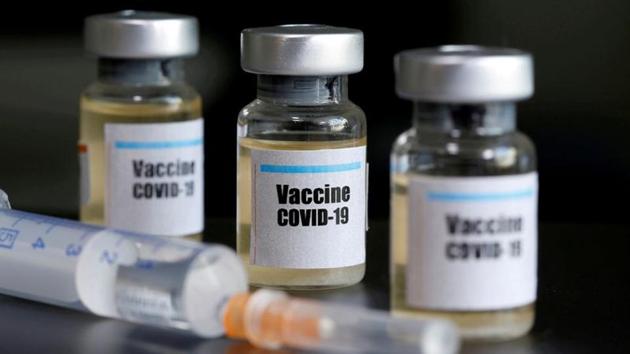Covid-19 vaccine: Room for cautious optimism | Analysis
Recent reports about a messenger ribonucleic acid (mRNA) vaccine, BTN162b2, developed by Pfizer and BioNTech being 90% effective in trial volunteers has brought cheer and hope that a vaccine for one of the deadliest diseases in history is finally within reach
The Covid-19 pandemic has galvanised the world scientific community to fast-track the creation of a vaccine against the Sars-CoV-2 virus. Recent reports about a messenger ribonucleic acid (mRNA) vaccine, BTN162b2, developed by Pfizer and BioNTech being 90% effective in trial volunteers has brought cheer and hope that a vaccine for one of the deadliest diseases in history is finally within reach. The global stock markets soared in anticipation that the economy will recover at a faster pace.

The phase 3 trial of this vaccine requiring two doses, three weeks apart, officially began on July 27. It has already enrolled 43,538 participants, of which at least 42% belong to diverse racial and ethnic backgrounds. An interim analysis of 94 individuals conducted by an independent data-monitoring committee found that the vaccine efficacy rate was above 90%, seven days after the second dose. This means that protection was achieved 28 days after the first dose.
The data is still not enough to qualify it for emergency-use authorisation, yet the findings are remarkable, especially since it validates the cutting-edge genetic strategy of utilising mRNA (or DNA) for producing a vaccine. Such technology has not been deployed in any successful vaccine against any infectious disease so far.
So what are RNA-based vaccines and is there sufficient data on their safety and efficacy? Traditionally, vaccines are developed by using the whole organism (viruses or bacteria) that is already inactivated with a proven record of safety. However, the proteins produced by this product are sufficiently immunogenic to prime the host immune system to mount an effective immune response against the disease-causing pathogen.
The mRNA vaccines, in contrast, utilise a unique process of making the body produce specific viral proteins itself. Here the scientists produce a synthetic version of mRNA and use it as a template to build a protein that is exactly similar to the one produced by the natural virus. The advantage is that such synthetic proteins are solitary and lack the ability to assemble and form a virus. The host immune system is tricked to detect these as natural viral proteins and it starts to mount a robust defensive response.
Besides, Pfizer and BioNTech, the other company that is also in an advanced stage of producing a similar vaccine is the United States (US)-based Moderna with its product, mRNA-1273, which the company claims is over 94% effective. Once data becomes available from the latter, it will be interesting to perform a comparative analysis on the safety and efficacy of the two. There are also reports about the equally high efficacy of the Russian vaccine, Sputnik V. Indeed, there could soon be more than one quality product available to control the pandemic.
Speaking specifically for Sars-CoV-2, the mRNA vaccines encode a part of the spike protein found on the surface of the coronavirus. The region is called the receptor-binding domain (RBD), which enables the virus to infect cells lining the human lung epithelium. The idea is to generate a highly-potent immune response that can interfere with the key starting point of the virus infection and block its replication.
The mRNA vaccines are expected to be more potent because they can activate both the innate (pre-existing and present since birth) and the acquired (develops in response to surrounding pathogens as one ages) component of the immune system, providing an extra layer of protection. Once standardised, they are quicker and easier to produce in large scales than conventional vaccines. Pfizer’s two doses in three weeks is a good strategy because the second dose acts as a booster for generating a strong immune response.
However, such cutting-edge technology has serious and logistic challenges for the mass administration of the vaccine. The mRNA vaccine needs to be stored at -70°C or below. They lose potency at normal refrigeration temperatures or even at -20C. This could pose practical difficulties of maintaining ultra-cold chains in several countries, including India.
Further questions relate to the technology and associated issues. The concerns include whether the proteins chosen for the vaccine are of the right type, are able to induce a targeted immune response, how long the immunity lasts and, most important, whether there are any long-term adverse reactions to the product.
It is understandable that the availability of a Covid-19 vaccine will initially be limited. The challenge will be to select the right one from the several that might become available. Pfizer may not be the best option for mass vaccination, also because it is not a part of the World Health Organization’s COVAX distribution programme. Nations will have to develop strategic prioritisation plans based on demography and chosen priorities. Policymakers will have to decide how much of the population should be vaccinated, particularly the elderly and those at higher risk of hospitalisation or death when infected.






